India Semiconductor Mission
- 20 Aug 2025
In News:
The Union Cabinet has cleared four new semiconductor manufacturing projects worth ?4,600 crore in Odisha, Punjab, and Andhra Pradesh under the India Semiconductor Mission (ISM). With this, the total number of approved projects under ISM has reached ten across six states, attracting cumulative investments of nearly ?1.60 lakh crore.
Details of Newly Approved Units
- SiCSem Pvt. Ltd. (Odisha):
- In partnership with UK-based Clas-SiC Wafer Fab Ltd.
- India’s first commercial compound semiconductor fabrication unit focused on Silicon Carbide (SiC) devices.
- Capacity: 60,000 wafers and 96 million packaged units annually.
- 3D Glass Solutions Inc. (Odisha):
- Will establish a vertically integrated packaging and embedded glass substrate unit.
- Focus: 3D Heterogeneous Integration modules.
- ASIP Technologies (Andhra Pradesh):
- Joint venture with APACT Co. Ltd., South Korea.
- Annual capacity: 96 million units.
- Applications: Mobile phones, set-top boxes, automobiles, and other electronic devices.
- Continental Device India Pvt. Ltd. (Punjab):
- Brownfield expansion of its Mohali facility.
- Focus: High-power discrete devices – MOSFETs, IGBTs, Schottky diodes, and transistors (using both silicon and SiC).
- Capacity: 158.38 million units annually.
Production from these units is expected to commence within the next 2–3 years.
Progress under ISM
- Launch Year: 2021
- Nodal Ministry: Ministry of Electronics and Information Technology (MeitY)
- Objective: Establish a self-reliant semiconductor and display ecosystem in India.
- Support: Incentive package of ?75,000 crore for fabs, ATMP/OSAT, compound semiconductor plants, and display fabs.
- Capacity Building: Target to train 60,000+ skilled professionals.
- Strategic Significance: Reduce import dependency, boost Atmanirbhar Bharat, and make India a global semiconductor hub.
Major Ongoing Projects under ISM
- Tata-PSMC Fab (Dholera, Gujarat): ?91,526 crore investment; capacity of 50,000 wafers/month for automotive and AI; operational by 2026.
- Micron ATMP (Sanand, Gujarat): ?22,900 crore investment; focus on DRAM and NAND packaging; expected by late 2025.
- Tata TSAT OSAT (Jagiroad, Assam): Output of 48 million chips/day.
- Kaynes OSAT (Sanand, Gujarat): Capacity of 6 million chips/day for telecom and industrial use.
- HCL–Foxconn JV (Uttar Pradesh): To produce 36 million display driver chips/month by 2027.
Psychoanalysis

- 24 Apr 2024
Why is it in the News?
Sudhir Kakar, a pioneering Indian psychoanalyst, author, and cultural critic, passed away on Monday at the age of 85.
What is Psychoanalysis?
- Psychoanalysis is a set of psychological theories and therapeutic methods that focus on the unconscious mind, as well as the role of repressed emotions and desires in shaping behavior and mental health.
- Developed by Sigmund Freud in the late 19th and early 20th centuries, psychoanalysis is based on the idea that many of our thoughts, feelings, and actions are influenced by unconscious motives and conflicts, often rooted in childhood experiences.
- Psychoanalysis has three core components:
- A method of investigation of the mind and the way one thinks.
- A systematized set of theories about human behavior.
- A method of treatment for psychological and emotional issues.
- Key concepts in psychoanalysis include the id, ego, and superego (the structural model of the psyche), the Oedipus complex, defense mechanisms (such as repression, denial, and projection), and dream interpretation.
- During psychoanalysis therapy, a patient works closely with a therapist to explore and understand unconscious thoughts and feelings, often by discussing dreams, memories, and other experiences.
- The goal is to bring repressed emotions to the surface and address any underlying conflicts in order to alleviate mental distress and improve overall well-being.
- While psychoanalysis has had a significant influence on psychology and mental health treatment, it remains a controversial approach due to its lack of scientific rigor and emphasis on subjective interpretation.
- Nevertheless, many of its concepts have been adapted or integrated into other forms of therapy, and psychoanalysis remains an important part of the history and development of psychology.
Significance:
- It has profoundly impacted the fields of psychology and mental health treatment, as well as culture, literature, and the arts. Its significance can be understood through the following points:
- Foundational Role: Psychoanalysis provided a groundbreaking approach to understanding the human mind and behavior, shifting the focus from conscious experiences to unconscious mental processes.
- Influence on Psychology: Many concepts introduced by psychoanalysis, such as the unconscious mind, defense mechanisms, and the influence of early childhood experiences, have been adopted and adapted by various schools of psychology, including cognitive-behavioral, humanistic, and psychodynamic approaches.
- Therapeutic Approach: Psychoanalysis revolutionized the way mental health issues were treated, moving away from a purely medical model and emphasizing the importance of talking therapy in addressing psychological problems.
- Cultural Impact: The ideas of psychoanalysis have permeated culture, literature, and the arts, influencing our understanding of human motivations, relationships, and emotions. Concepts like Freudian slips, dream interpretation, and the Oedipus complex have become part of everyday language.
- Interdisciplinary Applications: The principles of psychoanalysis have been applied in fields beyond psychology, including sociology, anthropology, literature, and film studies.
- Despite criticisms and revisions, psychoanalysis remains a significant and influential theory that has shaped our understanding of the human mind and behavior.
- It continues to contribute to the development of psychological theories and therapeutic approaches, enriching our comprehension of mental health and human nature.
Gujarat Freedom of Religion Act
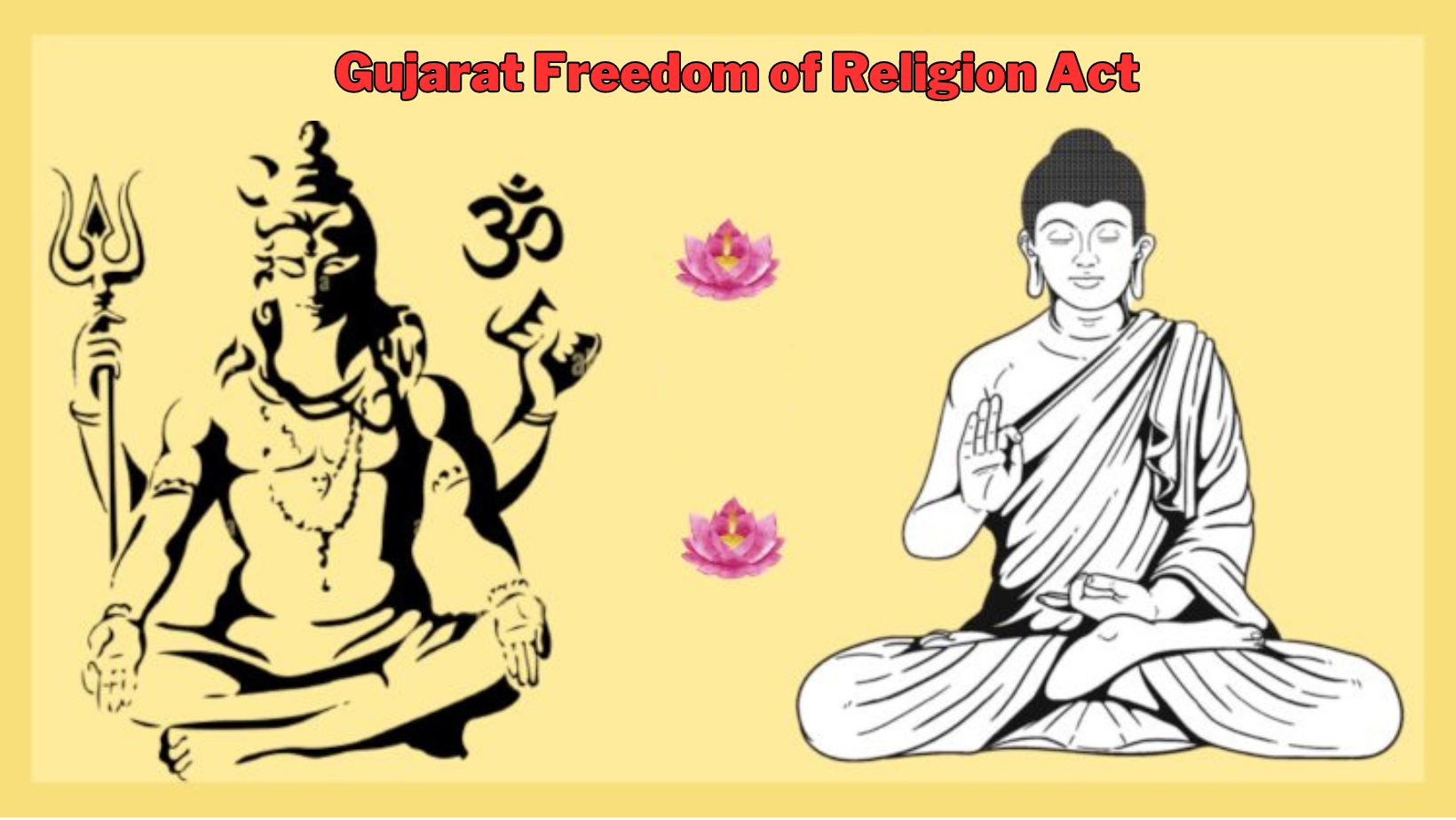
- 13 Apr 2024
Why is it in the News?
The Gujarat government recently clarified that Buddhism and Hinduism must be considered as two separate religions for religious conversions in the state.
Why did the Gujarat Government Issue the Circular?
- The Gujarat government issued the circular to address an issue regarding the application process for converting from Hinduism to Buddhism.
- The circular, issued by the Home Department highlights that the proper procedures outlined in the Gujarat Freedom of Religion Act (GFR Act) are not being followed.
- The circular points out that some offices are rejecting these conversion applications, arguing that under Article 25(2) of the Constitution, Sikhism, Jainism, and Buddhism are considered part of Hinduism.
- Therefore, applicants are told they don't need permission for religious conversion.
- This interpretation refers to Article 25, which guarantees religious freedom.
- Article 25(2)(b) allows laws for social welfare or reform for Hindus, which includes Sikhs, Jains, and Buddhists.
- Notably, the circular contrasts with a proposed 2006 amendment to the GFR Act, which suggested considering Jainism and Buddhism as part of Hinduism.
- However, the circular clarifies that, according to the GFR Act, Buddhism must be seen as a separate religion.
How does the GFR Act Govern Religious Conversions in Gujarat?
- The Gujarat Freedom of Religion Act (GFR Act) controls how people change their religion in Gujarat.
- According to the state government, this law aims to stop religious conversion by offering rewards, using force, lying, or tricking people.
- One part of the law, Section 3, makes it a crime to force or persuade someone to change their religion, whether by using force, offering rewards, trickery, or arranging marriages.
- Another part, Section 3A, added in 2021, lets anyone who feels harmed or their relatives report these crimes to the police.
- People who break Section 3 can be sent to jail for up to three years and fined up to Rs 50,000.
- If the person affected is a woman, a child, or from certain communities, the punishment is harsher – up to four years in jail and a fine of Rs 1 lakh.
- For a religious conversion to be legal, Section 5 says the person leading the ceremony must get permission from the District Magistrate beforehand.
- And the person who changes their religion must tell the District Magistrate afterward.
- Not doing this can result in a one-year jail term or a fine of up to Rs 1,000.
- In 2021, the GFR Act was changed to include more rules.
- It now makes it a crime to change religion through marriage (Section 4A) and says marriages are void if one person converts before or after getting married (Section 4B).
- It also punishes people involved in organizations that unlawfully convert others (Section 4C). The accused now have to prove that the conversion was legal (Section 6A).
SC directs UOI to frame a policy to phase out heavy-duty diesel vehicles & replace them with BS VI (The New Indian Express)
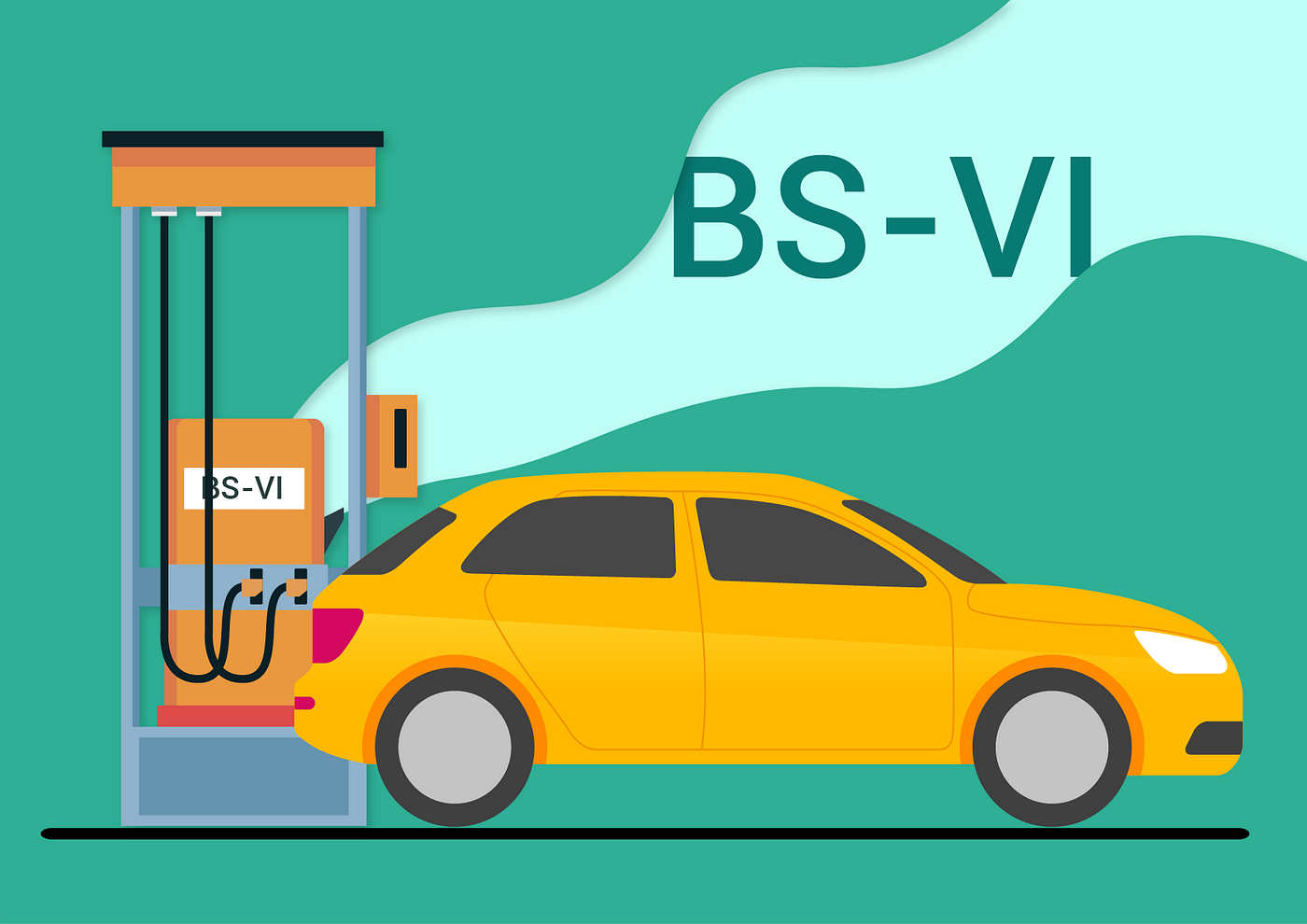
- 13 Jan 2024
Why is it in the News?
The Supreme Court has directed the Centre to frame a policy within six months to replace heavy-duty diesel vehicles and replace them with BS VI vehicles, observing that the right to clean air is not the entitlement of people living in Delhi alone.
What are BS-VI Norms?
- Bharat stage (BS) emission standards are laid down by the government to regulate the output of air pollutants from internal combustion engines and spark-ignition engine equipment, including motor vehicles.
- The central government has mandated that vehicle makers must manufacture, sell and register only BS-VI (BS6) vehicles from April 1, 2020.
- The first emission norms were introduced in India in 1991 for petrol and in 1992 for diesel vehicles.
- Following this, the catalytic converter became mandatory for petrol vehicles and unleaded petrol was introduced in the market.
What is the Difference Between BS4 and BS6?
- Both BS-IV and BS-VI are unit emission norms that set the maximum permissible levels for pollutants that an automotive or a two-wheeler exhaust can emit.
- Compared to the BS4, BS6 emission standards are stricter
- Whereas makers use this variation to update their vehicles with new options and safety standards, the biggest modification comes in the permissible emission norms.
What area unit BSI, BSII, BSIII, BSIV, and BSVI emission norms?
- The abbreviation BS refers to ‘Bharat Stage’.
- It is prefixed to the iteration of the actual emission norms.
- The primary rules with the soubriquet Asian nation 2000 were introduced in the year 2000, with the second and third iterations being introduced in 2001 and 2005 with the soubriquet BSII (BS2) and BSIII (BS3), respectively.
- The fourth iteration, BSIV, was introduced in 2017 and therefore the delay between the introduction of BS3 and BS4 resulted in fast-tracking the BSVI or BS6 emission norms rather than BSV (BS5) norms.
- On 29 April 1999, the Supreme Court of India ruled that all vehicles in the country had to meet Euro I or India 2000 norms by June 1, 1999, and Euro II would be mandatory in the National Capital Region (NCR) from April 2000.
- Carmakers were not prepared for this transition and in a subsequent judgment, the implementation of Euro II was deferred.
- On 29 April 1999, the Supreme Court of India ruled that all vehicles in the country had to meet Euro I or India 2000 norms by June 1, 1999, and Euro II would be mandatory in the National Capital Region (NCR) from April 2000.
- In 2002, the government accepted the report submitted by the Mashelkar committee, which proposed a road map for the rollout of Euro-based emission norms in India.
- It also recommended a phased implementation of future norms, with regulations being implemented in major cities first and extended to the rest of the country after a few years.
- Based on the recommendations of the committee, the National Auto Fuel policy was announced officially in 2003.
- The road map for the implementation of the BS norms was laid out in 2010.
- The policy also created guidelines for auto fuels, reduction of pollution from older vehicles and R&D for air quality data creation and health administration.
- The standards and the timeline for implementation are set by the Central Pollution Control Board under the Ministry of Environment, Forest and Climate Change.
- Since October 2010, Bharat Stage (BS) III norms have been enforced across the country.
- BS-IV emission norms were put in place in 13 major cities from April 2010, and the entire country from April 2017.
- In 2016, the government announced that the country would skip the BS-V norms altogether and adopt BS-VI norms by 2020.
Ministry of Environment, Forest, and Climate Change submits proposals for Wetland City Accreditation under the Ramsar Convention on Wetlands for cities of Indore, Bhopal and Udaipur (The New Indian Express)
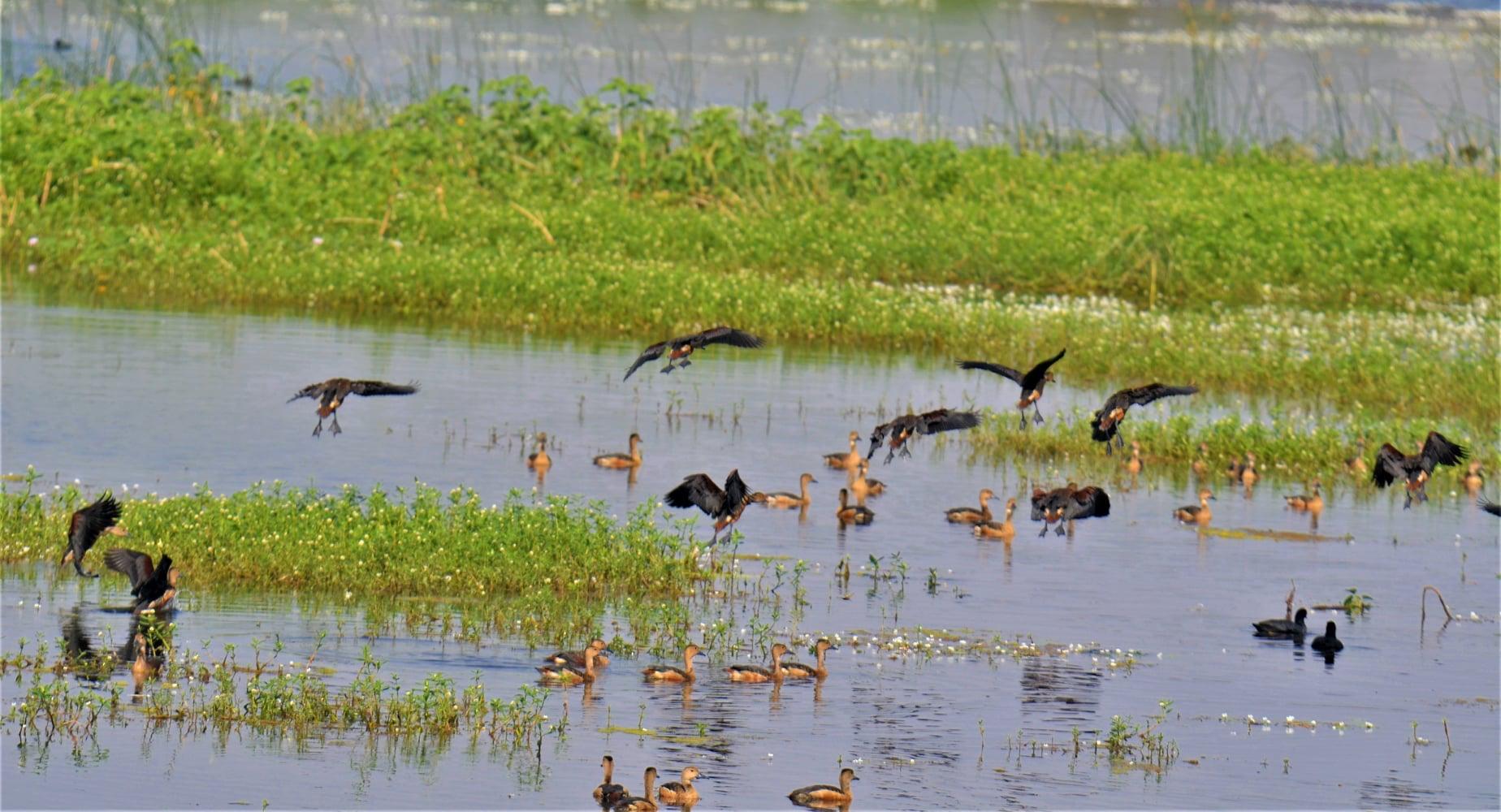
- 05 Jan 2024
Why is it in the News
MoEF&CC has submitted three nominations from India for Wetland City Accreditation (WCA) of Indore (Madhya Pradesh), Bhopal (Madhya Pradesh) & Udaipur (Rajasthan) under the Ramsar Convention on Wetlands.
What is Wetland City Accreditation (WCA)?
- Recognizing the importance of wetlands in urban and peri-urban environments and to take appropriate measures to conserve and protect these wetlands, the Ramsar Convention during COP12 held in the year 2015 approved a voluntary Wetland City Accreditation system under Resolution XII.10.
- It recognizes cities which have taken exceptional steps to safeguard their urban wetlands.
- The Wetland City Accreditation scheme aims to further promote the conservation and wise use of urban and peri-urban wetlands, as well as sustainable socio-economic benefits for local populations.
- Additionally, the Accreditation seeks to encourage cities that are close to and dependent on wetlands.
- Primarily Wetlands of International Importance, but also wetlands with other conservation category status, to develop and strengthen a positive relationship with these valuable ecosystems.
- To be formally accredited, a candidate for the Wetland City Accreditation should satisfy the standards used to implement each of the six international criteria mentioned Operational Guidance for WCA of the Ramsar Convention on Wetlands.
- This voluntary scheme provides an opportunity for cities that value their natural or human-made wetlands to gain international recognition and positive branding opportunities for their efforts in demonstrating strong positive relationships with wetlands.
- The ongoing Amrit Dharohar initiative of the MoEF&CC announced as part of this year’s budget also aims to achieve similar goals by promoting unique conservation values of Ramsar Sites.
- In this context, WCA will not only generate public awareness about conservation of urban and peri-urban wetlands but will also help in implementation of Amrit Dharohar across the country.
The Three Nominated Cities Include:
- Indore: Founded by Holkars, Indore is the cleanest city in India and the recipient of India’s Smart City Award 2023 for its best sanitation, water and urban environment.
- Sirpur Lake, a Ramsar Site in the city, has been recognised as an important site for water bird congregation and is being developed as a Bird Sanctuary.
- A strong network of more than 200 wetland mitras is engaged in bird conservation and sensitising local community to protect Sarus Crane.
- Bhopal: One of the cleanest cities in India that has proposed conservation zones around the wetlands in its draft City Development Plan 2031.
- Bhoj Wetland, Ramsar Site is the city’s lifeline, equipped with the world-class wetlands interpretation centre, Jal Tarang.
- Additionally, the Bhopal Municipal Corporation has a dedicated Lake Conservation Cell.
- A network of more than 300 wetland mitras is engaged in wetland management and conservation of Sarus Crane.
- Udaipur: Located in Rajasthan, the city is surrounded by five major wetlands, namely, Pichola, Fateh Sagar, Rang Sagar, Swaroop Sagar, and Doodh Talai.
These wetlands are an integral part of the city’s culture and identity, help maintain the city’s microclimate, and provide a buffer from extreme events.
Gajraj Suraksha (Elephant Safety) System (New Indian Express)

- 01 Dec 2023
Why is it in the News?
"In a first", through cutting-edge indigenous technology, the Indian Railways has successfully developed a system, preliminarily called as ‘Gajraj Suraksha (Elephant safety) system’ to prevent elephant–train collisions in the forest areas.
About Gajraj Suraksha:
- Gajraj Suraksha uses an AI-based algorithm and a network of sensitive optical fiber cables to detect elephants approaching railway tracks, aiming to address elephant fatalities resulting from train accidents.
- How this will work?
- The system functions by sensing pressure waves generated by elephant movements along the tracks.
- As elephants move, the optical fibers detect vibrations from their footsteps, triggering signals within the fiber network.
- This enables the system to identify elephants up to 200 meters ahead of their arrival on the track.
- The Optical Fibre Cable (OFC)-based Intrusion Detection System sends alarms to station masters upon detecting movement along the tracks.
- The network is designed to accurately track elephant movement, allowing prompt communication to nearby station masters.
- This ensures timely information to locomotive drivers, facilitating the slowing down or stopping of trains to prevent potential collisions with elephants.
- The Indian Railway plans to introduce this system in West Bengal, Odisha, Jharkhand, Assam, Kerala, certain parts of Chhattisgarh, and Tamil Nadu.
Manipur to Conduct Census of Amur Ffalcon (The New Indian Express)
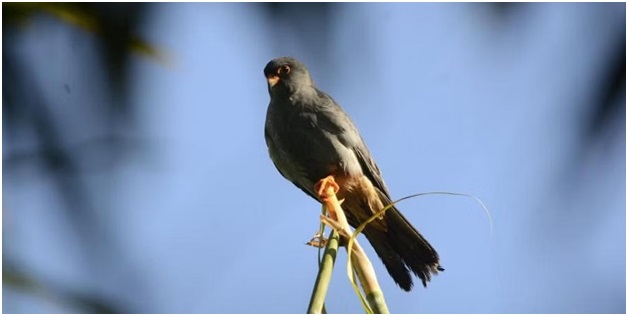
- 14 Oct 2023
Why in the News?
The Manipur Forest Department will conduct the first-ever Amur falcon census. This initiative in India is one of the several programs the agency is running to safeguard migrating birds.
About Amur Falcon:
- The Amur Falcon, a diminutive member of the falcon family locally known as Akhuipuina, predominantly frequents Manipur and Nagaland.
- Originating from southeastern Siberia and northern China, these birds embark on extensive migrations in vast formations to winter in Southern and East Africa, covering a one-way journey of approximately 20,000 km through India twice a year.
- In terms of conservation, the Amur Falcon is safeguarded by the Wildlife Protection Act of 1972, listed under Schedule IV.
- Hunting or possession of its meat is subject to legal repercussions, including imprisonment for up to three years, a fine of up to 25,000, or bonds.
- Initiating a conservation effort in 2018, the forest department employed radio tagging to study the birds' migratory routes.
- As per the International Union for Conservation of Nature (IUCN), the Amur Falcon is categorized as "Least Concern."
- Despite this, the species faces threats such as illegal trapping and killing during migration, along with habitat loss due to agricultural practices and land reclamation.
Six armed poachers, timber mafia held by forest officials at Similipal National Park (New Indian Express)
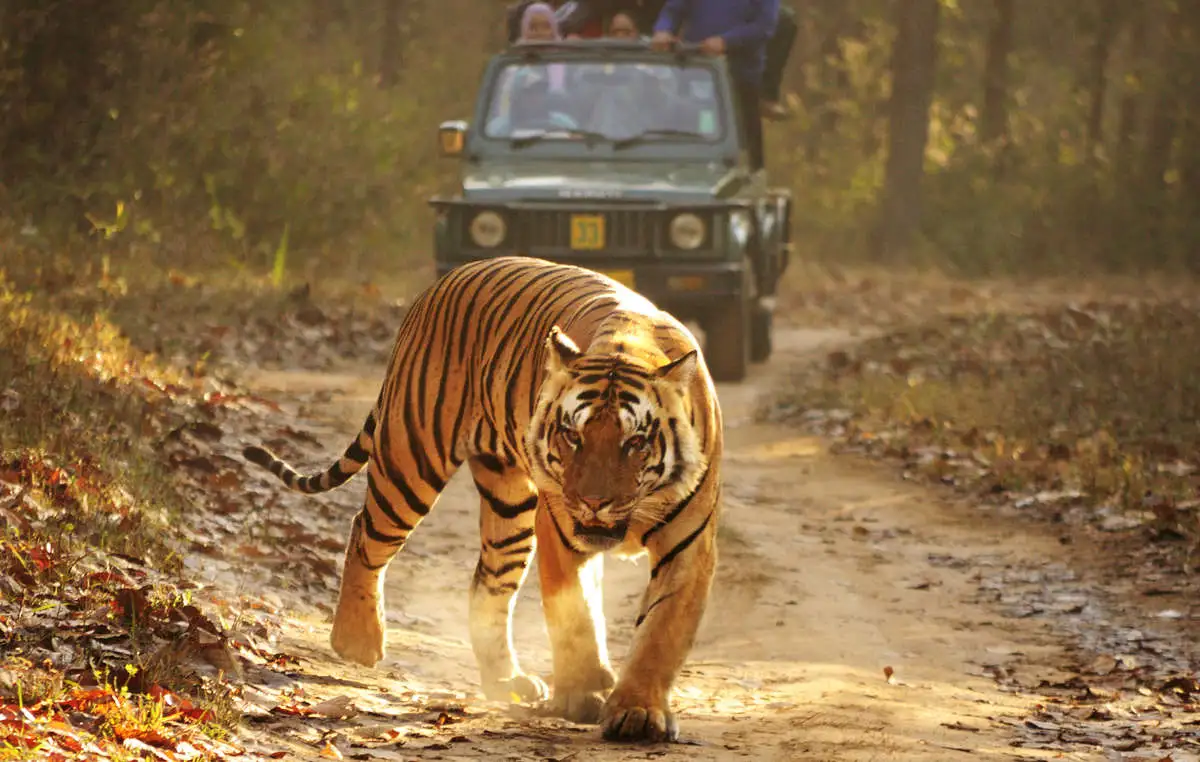
- 26 Dec 2023
Why is it in the News?
In a significant breakthrough, forest officials at Similipal National Park apprehended four armed poachers and two members of the timber mafia in separate locations on Saturday night.
About Similipal Tiger Reserve (STR):
- Similipal Tiger Reserve is located within the Mayurbhanj District, in the Northernmost part of Odisha.
- Declared a 'Tiger Reserve' in 1956, STR became a part of the national conservation initiative 'Project Tiger' in 1973.
- Recognized by UNESCO in 2009, STR, along with a transitional area covering 2250 sq. km, was included in the World Network of Biosphere Reserves.
- Terrain: Surrounded by high plateaus and hills, STR boasts the twin peaks of Khairiburu and Meghashini, reaching 1515m above mean sea level.
- The undulating and hilly terrain features open grasslands and wooded areas, with the inclined plateau rising abruptly from the low coastal plains.
- Hydrography: The region is crisscrossed with perennial water sources, contributing to rivers like Budhabalanga, Salandi, and various tributaries of the Baitarani River.
- Vegetation: STR encompasses a diverse mix of forest types and habitats, with Northern tropical moist deciduous dominating alongside semi-evergreen patches.
- Notably, it hosts the world's only landscape with melanistic tigers.
- Tribes: The vicinity of STR is inhabited by various tribes, including Kolha, Santhala, Bhumija, Bhatudi, Gondas, Khadia, Mankadia, and Sahara.
- Flora: Home to an impressive 1078 plant species, including 94 orchid species, STR is characterized by the dominance of Sal trees.
- Fauna: The reserve is home to a variety of wildlife, including leopard, gaur, elephant, langur, barking and spotted deer, sloth bear, mongoose, flying squirrel, porcupine, turtle, monitor lizard, python, sambar, pangolin, and more.
What is the Special Tiger Protection Force (STPF)?
- Realizing the importance of ‘tiger protection’ in biodiversity conservation, the Finance Minister announced policy initiatives in February 2008, for constituting the ‘Special Tiger Protection Force’ (STPF).
- Based on the one-time grant of Rs. 50 crore was provided to the National Tiger Conservation Authority (NTCA) for raising, arming and deploying a Special Tiger Protection Force, the proposal for the said force has been approved by the competent authority for 13 tiger reserves.
- The STPF has been made operational in the States of Karnataka (Bandipur), Maharashtra (Pench, Tadoba-Andhari, Nawegaon-Nagzira, Melghat), Rajasthan (Ranthambhore), Odisha (Similipal) and Assam (Kaziranga), out of 13 initially selected tiger reserves, with 60% central assistance under the ongoing Centrally Sponsored Scheme of Project Tiger (CSS-PT).
Odisha Government has declared Leprosy as a 'Reportable Disease' in the State (New Indian Express)

- 25 Dec 2023
Why is it in the News?
The Odisha government on Friday declared leprosy a reportable disease in the state and asked hospitals and persons dealing with diagnosis and treatment, institutions imparting medical education and providing diagnostic services to report all cases to the respective district health authorities.
What is Leprosy?
- Leprosy, often referred to as Hansen's disease, is a persistent infectious illness brought on by the bacteria Mycobacterium leprae.
- The skin, eyes, mucosal surfaces of the upper respiratory tract, and peripheral nerves are the main areas affected by this condition.
- If left untreated, the condition has the potential to produce gradual and irreversible impairments.
- Prevalent in tropical and subtropical regions, leprosy qualifies as a neglected tropical disease (NTD) found in over 120 countries.
- Its occurrence spans all age groups, encompassing early childhood to advanced age.
- Transmission of Disease: Transmission of leprosy transpires through droplets from the nose and mouth, necessitating prolonged, close contact with an untreated individual.
- Contrary to misconceptions, casual interactions such as handshakes, hugs, shared meals, or proximity do not facilitate transmission.
- Symptoms: Symptoms usually manifest 3 to 5 years post-exposure to the leprosy-causing bacteria.
- Red patches on the skin.
- Skin Lesion
- Numbness in arms, hands, and legs.
- Ulcers on the soles of feet.
- Muscle Weakness and excessive weight loss.
- Nerve damage can result in loss of sensation in limbs and potential mucous membrane complications like a stuffy nose or nosebleeds.
- Treatment: Leprosy is curable through Multi-Drug Therapy (MDT), with early intervention crucial in preventing disability.
- Importantly, the commencement of treatment not only aids in recovery but also halts the transmission of the disease.
About the National Leprosy Eradication Programme (NLEP):
- The National Leprosy Eradication Programme is a centrally sponsored Health Scheme under the National Health Mission of the Ministry of Health and Family Welfare, Govt. of India.
- The Programme is headed by the Deputy Director of Health Services (Leprosy ) under the administrative control of the Directorate General Health Services, Govt. of India.
- While the NLEP strategies and plans are formulated centrally, the programme is implemented by the States/UTs.
- The major concern of the Programme is to detect cases of leprosy at an early stage and provide complete treatment, free of cost, in order to prevent the occurrence of Grade II Disability (G2D) in affected persons.
- India has achieved the elimination of leprosy as a public health problem as per WHO criteria of less than 1 case per 10,000 population at the National level in 2005.
- However, there are few districts within States where leprosy is still endemic.
Rating agencies too subjective, loaded against India, need reform: CEA (Indian Express)

- 22 Dec 2023
Why is it in the News?
Credit rating agencies need to reform their sovereign rating process to correctly reflect the default risk of developing economies, saving billions in funding costs, the government’s chief economic adviser, V Anantha Nageswaran, said recently.
What is a Sovereign Credit Rating?
- A Sovereign Credit Rating serves as an assessment of a government's ability to meet its debt obligations, with a lower rating reflecting higher credit risk.
- Rating agencies typically consider multiple factors such as growth rate, inflation, government debt, short-term external debt as a percentage of GDP, and political stability.
- A positive credit rating not only boosts credibility but also indicates a history of timely loan repayments, aiding banks and investors in evaluating loan applications and determining appropriate interest rates.
- The global credit rating industry is dominated by three major agencies: Moody's, Standard & Poor's, and Fitch.
- Despite India's ascent from the 12th to the 5th largest economy globally in 2023, with the second-highest growth rate among comparable economies, its credit ratings from S&P and Fitch stand at BBB, while Moody's rates it at Baa3—indicating the lowest investment-grade level.
Concerns Regarding Credit Rating Methodology:
- A quantitative examination revealed that more than 50% of credit ratings rely on qualitative components.
- Institutional Quality, predominantly gauged through the World Bank’s Worldwide Governance Indicators (WGIs), emerges as the primary factor influencing the credit rating of a developing economy.
- This poses a challenge as these metrics are often non-transparent, perception-driven, and derived from a limited group of experts, making them inadequate in representing the sovereign's willingness to meet its financial obligations.
- The non-trivial impact of these indicators on ratings implies that developing economies must exhibit progress along subjective indicators to secure a credit rating upgrade.
CEA's Suggestions for Credit Rating Reform:
- The Chief Economic Advisor (CEA) proposed a shift towards primarily considering a country's historical debt repayment record as a key determinant of its 'willingness to pay,' in contrast to relying on potentially suboptimal qualitative information.
- Embracing such a model would significantly enhance the credibility of Credit Rating Agencies (CRAs).
- The use of qualitative information and judgment should only be a last resort when genuine, verifiable data options are unavailable.
- If governance indicators are to be employed, they should be grounded in clear, well-defined, and measurable principles, steering away from subjective assessments by CRAs.
- CRAs possess a comprehensive database of global best practices, influencing their judgments.
- Sharing this knowledge with the countries they assess would empower sovereigns to take targeted actions to enhance their creditworthiness.
One Station One Product’ scheme (New Indian Express)
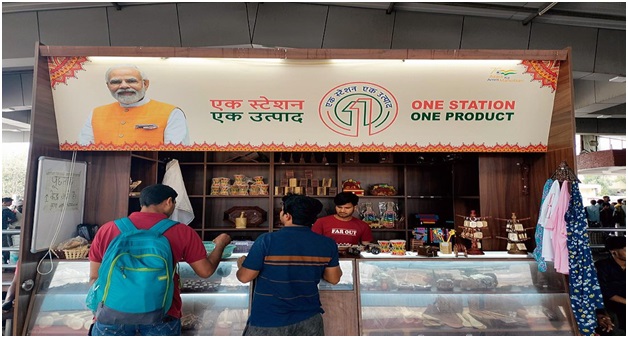
- 15 Nov 2023
Why in the News?
The Indian Railway has established more than a thousand outlets in railway stations across the nation under its ‘One Station One Product’ (OSOP) initiative which aimed at providing a platform for skilled artisans to sell their indigenous products.
About One Station One Product’ (OSOP):
- The OSOP scheme is a unique initiative by the Indian Railways and aims to provide livelihood opportunities through skill development to local artisans, potters, weavers, and craftsmen.
- It was announced in the Union Budget 2022-23.
- The scheme, designed by the National Institute of Design, Ahmedabad, provides distinctive outlets that give high visibility to indigenous products, benefiting local craftsmen.
- Railways allot the outlets at its stations through a tendering process.
- The scheme’s outreach measures include advertising, social media, public announcements, press notifications, and personal visits to artisans.
- The products at these outlets range from artifacts and handicrafts to textiles and traditional appliances, indigenous to the region, and are crafted by local artisans or tribals.
- They also include locally made or grown food products in processed or semi-processed forms.
- It provides uniquely designed sale outlets for locals to sell indigenous products, and is now operational at 1,037 stations nationwide.
Birsa Munda (New Indian Express)
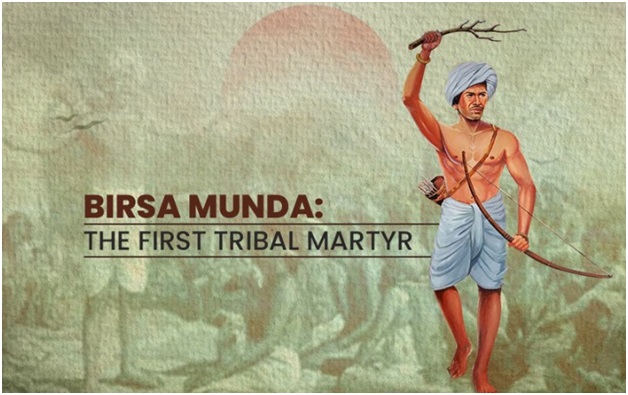
- 14 Nov 2023
Why in the News?
On Birsa Munday's birthday on Nov. 15th, PM Modi is scheduled to visit Ulihatu village, where the great leader's descendants live in an asbestos house.
About Birsa Munda:
- Birsa Munda was a tribal leader and folk hero who belonged to the Munda tribe.
- He was born on November 15, 1875, in the village of Ulihatu in the present-day Khunti district of Jharkhand.
- Birsa Munda is known for leading a rebellion against British colonial rule and the exploitation of tribal communities in the late 19th century.
- He was a charismatic leader and a devout Hindu.
- He preached a message of social and religious reform and advocated for the revival of traditional Munda culture and values.
- He also led a campaign against the conversion activities of Christian missionaries.
- In 1895, Birsa Munda launched a rebellion against the British.
- He and his followers attacked police stations, government buildings, and the homes of zamindars (landlords).
- The British responded with a heavy crackdown, and Birsa Munda was arrested in 1897.
- He was released from prison in 1898 but was rearrested in 1900 after he resumed his rebellion.
- Birsa Munda died in prison on June 9, 1900, at the age of 25.
- Birsa Munda's rebellion was a watershed moment in the history of the Indian independence movement.
- It inspired other tribal leaders to rise up against the British, and it helped to raise awareness of the plight of tribal communities in India.
- Birsa Munda is revered as a hero by tribal communities across India, and he is considered to be one of the pioneers of the Indian independence movement.
- In addition to his political activism, Birsa Munda was also a religious reformer.
- He founded a new religious movement called Birsait, which combined elements of Hinduism and tribal animism.
- Birsaitism is still practiced by some tribal communities in Jharkhand today.
- Birsa Munda's legacy continues to inspire people today, and he is remembered as one of the greatest heroes of the Indian independence movement.
- To honor Birsa Munda's significant influence on the national movement, the state of Jharkhand was established on his birthday in 2000.
- Recognizing his contributions, the Central Government declared November 15 as 'Janjatiya Gaurav Divas' in 2021.
Bioluminescent Fungi 'Mycena Chlorophos' (The New Indian Express)

- 10 Nov 2023
Why in the News?
A team of researchers and the forest department have found a rare bioluminescent mushroom in the Kanyakumari Wildlife Sanctuary (KKWLS).
About Mycena chlorophos:
- Mycena chlorophos is a species of bioluminescent fungus, meaning that it can produce its light.
- It is primarily found in subtropical Asia, including India, Japan, Taiwan, Polynesia, Indonesia, and Sri Lanka, as well as in Australia and Brazil.
- The bioluminescence is produced through a chemical reaction that involves luciferin, a light-emitting molecule, and the enzyme luciferase.
- Luciferase catalyzes the oxidation of luciferin, which produces light.
- The luciferin in Mycena chlorophos is a compound called trans-3-hydroxyhispidin.
- This compound is also found in other bioluminescent fungi, such as Neonothopanus nambi and N. gardneri.
- The bioluminescence of Mycena chlorophos is thought to serve several functions.
- It may help the fungus to attract insects, which can help to disperse its spores.
- It may also help the fungus to ward off predators.
What is Bioluminescence?
- It is the ability of living organisms to emit light.
- It occurs due to a biochemical reaction between luciferins, oxygen, and the enzyme luciferase.
- The benefit of bioluminescence in fungi is to attract insects to facilitate their spore dispersal.
Stable Auroral Arc (SAR) (New Indian Express)

- 09 Nov 2023
Why in the News?
In a rare phenomenon, researchers from the Indian Institute of Astrophysics (IIA) have recorded the auroral activity that is normally witnessed over the North Pole- at Hanle and Merak in Ladakh through the all-sky cameras recently.
What is Stable Auroral Arc (SAR)?
- An aurora is a glorious curtain of light that is usually seen at high latitudes like in the Scandinavian countries, and they are not expected to occur at lower latitudes.
- They occur due to the interaction between the Earth’s magnetosphere and the incoming solar wind that carries charged particles and magnetic fields.
- They are typically several hundred kilometers wide and can extend for thousands of kilometers.
- A Stable Auroral Arc (SAR) is red in colour as opposed to the usual green-blue curtains of light seen from high latitudes.
- It is a rare phenomenon and it was not exactly an aurora-like one witnessed from close to the North Pole.
- SAR arcs are typically subvisual, meaning that they cannot be seen with the naked eye.
- However, they can be detected using specialized instruments, such as photometers and spectrographs.
- It was observed in Ladakh during a strong G3-class geomagnetic storm and this event was registered in many parts of the world.
Gundla Brahmeswaram Wildlife Sanctuary (New Indian Express)
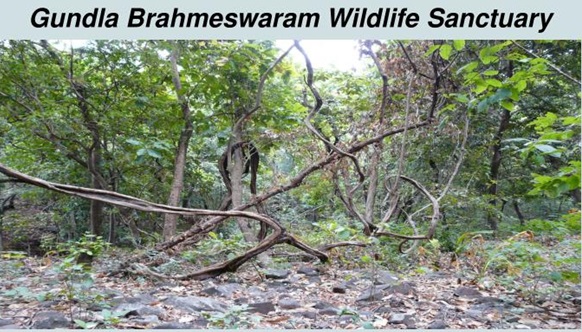
- 03 Nov 2023
Why in the News?
In a first-of-its-kind, over 50 grass species were identified during a two-day workshop and survey on ‘Grasses Identification and Grassland Management’ at the Gundla Brahmeswaram Wildlife Sanctuary in the Nagarjunasagar-Srisailam Tiger Reserve (NSTR).
About Gundla Brahmeswaram Wildlife Sanctuary:
- Location: It is located in the Kurnool & Prakasam of Andhra Pradesh with an area of 1194 sq km.
- Located between two important hill passes known as "Mantralamma kanuma" and "Nandi kanuma".
- The Northern part of this Sanctuary forms a major part of the Southern boundary for Nagarjunasagar-Srisailam Tiger Reserve.
- River: The Gundlakamma River stretches across the sanctuary.
- It also has many, mesic sites and ancient rock formations.
- Indicator Species: Tiger, Panther, Wild dog, Bats, Fig trees.
- It was declared a wildlife sanctuary on September 18, 1990.
- Forest Type: Dry mixed deciduous forest, moist dry deciduous, semi-evergreen, dry deciduous scrub forest and dry savannahs.
- Flora: The forest is an adobe to medicinal plants of which 10 are critically endangered, 21 are Endangered and 27 species are vulnerable.
- The plants like Madhuca longifolia, Dellenia pentagyna, Aristolochia indica, Terminalia arjuna, Pithecolobium ducle, Adina cordifolia, Vanda spp; etc; thrive here.
- Fauna: Wildlife like Tiger, Leopard, Flying squirre. angur, jungle cat, panther, tiger, mouse deer, hyena, bonnet monkey etc; are found here.
INCOIS wave rider buoy washes ashore in Gopalpur (New Indian Express)

- 04 Dec 2023
Why is it in the News?
A wave rider buoy, equipped belonging to the Indian National Centre for Ocean Information Services (INCOIS), with GPS and various weather-related instruments, was found ashore at the Gopalpur Military Station in Ganjam district on Saturday.
About Indian National Centre for Ocean Information Services (INCOIS):
- INCOIS is an autonomous organization under the Ministry of Earth Sciences (MoES).
- It is a unit of the Earth System Science Organization (ESSO), New Delhi.
- It is located in Hyderabad & was established in 1999.
- The ESSO operates as an executive arm of the Ministry of Earth Sciences (MoES) for its policies and programmes.
- It is mandated to provide the best possible ocean information and advisory services to society, industry, government agencies and the scientific community through sustained ocean observations and constant improvement through systematic and focused research.
What is the Earth System Science Organisation (ESSO)?
- Earth System Science Organisation (ESSO) is a virtual organisation set up by the Ministry of Earth Sciences GOI in 2007 and it is the executive arm of MoES.
- It has three major branches of earth sciences viz.,
- Ocean Science & Technology
- Atmospheric Science & Technology
- Geosciences and Technology.
- The overall vision of the ESSO is to excel in knowledge and technology enterprise for the earth system science realm towards the socio-economic benefit of the Indian sub-continent and in the Indian Ocean region.
- The ESSO contributes to the areas of Weather (General) and Weather advisories specific to agriculture, aviation, shipping, sports, etc. Monsoon, Disasters (cyclones, earthquakes, tsunamis, sea level rise), Living and non-living resources (fishery advisory, poly-metallic nodules, gas hydrates, freshwater etc), Coastal and Marine Ecosystems and Climate Change, Underwater Technology.
Satkosia Tiger Reserve (New Indian Express)
- 07 Sep 2023
What is the News ?
Recently, the Satkosia Tiger Reserve made a distressing discovery of two elephants' severely decomposed remains.
Facts About:
- Location: Situated in the heart of Odisha, this reserve spans across four districts: Angul, Cuttack, Boudh, and Nayagarh. The Mahanadi River flows through the valleys within the reserve.
- Size: Covering an area of 1136.70 sq km, with 523.61 sq km designated as the core area, Satkosia Tiger Reserve is also part of the Mahanadi Elephant Reserve.
- Unique Geography: Satkosia serves as the convergence point of two distinctive bio-geographic regions in India: the Deccan Peninsula and the Eastern Ghats.
- Landscape: The terrain here is characterized by hills, featuring moderate to steep slopes and narrow valleys.
- Vegetation: The forest primarily consists of North Indian tropical moist deciduous forests and moist peninsular low-level sal.
- Flora: The dominant tree species is sal, forming dense stands. Other associated species include Asan (Terminalia alata), Dhaura (Anogeissus latifolia), Bamboo (Dendrocalamus strictus), and Simal (Bombax ceiba).
- Fauna: The reserve is home to a diverse range of wildlife, including tigers, leopards, elephants, spotted deer, sambar deer, chowsingha, barking deer, bison, wild dogs, sloth bears, jackals, giant squirrels, and porcupines. Additionally, it provides a natural habitat for two endangered species: the freshwater crocodile and the gharial.
